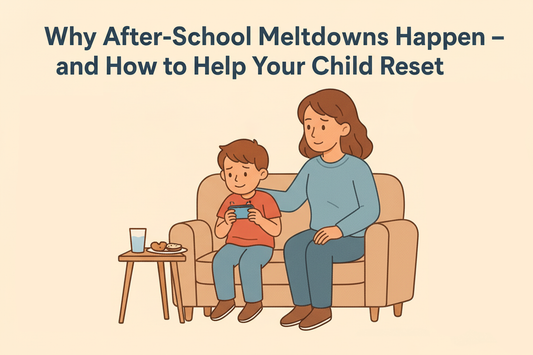🌱 From Stress to Strength: Building Emotional Resilience in Children

SATs season may be over, but the need to support our children’s mental wellbeing is just beginning. The tools we give them to navigate stress - like calming routines, breathing exercises, or mindfulness with Stix - aren’t just exam strategies. They’re building blocks for lifelong resilience.
At Stix, we focus on prevention, not just reaction. By giving children simple, engaging techniques they can use every day, we help them build strong emotional foundations long before crisis hits. After all, the best intervention is prevention, teaching children how to understand and manage emotions before those emotions become overwhelming.
In this blog, we explore what emotional resilience looks like at different ages, how to nurture it through consistent routines, and why repetition is the secret to building strength from the inside out.
👶 What Does Emotional Resilience Look Like?
Emotional resilience isn’t about “toughing it out.” It’s about bouncing back - feeling safe enough to express big feelings, and having the tools to regulate them.
Here’s how it often shows up at different ages:
-
Ages 4–6: Being able to say “I’m angry” instead of throwing a toy. Taking a few deep breaths when they’re upset, or walking away from a frustrating moment with a sibling.
-
Ages 7–9: Recognising their own emotional state (“I need a break”) and starting to use calming strategies like breathing or journaling.
-
Ages 10–12: Reflecting on emotional experiences, problem-solving when faced with stress, and reaching out for help when needed.
No matter the age, resilience isn’t fixed - it’s built, slowly and steadily.
🕒 Daily Routines That Nurture Resilience
Children thrive on structure. Routine creates a sense of safety, and within that safety, they’re better able to manage stress and regulate emotions.
Here are a few routines that strengthen emotional resilience:
-
Start and end the day with intention: Morning check-ins (“How are you feeling today?”) and evening reflections (“What made you proud today?”) help children stay connected to their emotions.
-
Create calming rituals: Use tools like Stix at the same time each day—before school, after screen time, or as part of the bedtime wind-down.
-
Consistent sleep, movement, and mealtimes: These physical anchors play a huge role in emotional regulation.
Routine isn’t just about order, it’s about emotional security.
🎈 Activities That Build Emotional Strength
Daily emotional regulation doesn’t have to feel like a chore. Simple, engaging activities can make a huge difference:
-
Mindfulness: Even just a few minutes a day helps children slow down, become aware of their thoughts, and reset.
-
Breathing games: Whether it’s blowing bubbles, counting finger breaths, or using Stix, these playful tools calm the nervous system.
-
Unstructured play: Imaginative play is a natural way for children to express emotions, build confidence, and process experiences.
Stix turns these activities into something children look forward to - using lights, sound, and gentle movement to bring mindfulness to life.
🔁 Why Repetition Builds Resilience
One-off tools don’t build habits - repetition does. That’s why Stix focuses on daily practice.
By using Stix regularly, children create muscle memory around calming techniques. They begin to reach for emotional tools without needing to be told. Over time, this builds a powerful sense of autonomy, confidence, and control.
Just like brushing their teeth, regulating emotions becomes a daily habit - not just something they do when things feel hard.
🌟 The Takeaway
Supporting your child’s mental health doesn’t end with SATs. The same tools that help them cope during stressful times can be used year-round to build real, lasting strength.
With Stix, you’re not just helping your child in the moment, you’re giving them skills they’ll carry with them for life.
Resilience isn’t something children are born with, it’s something they practice and strengthen, just like a muscle.



